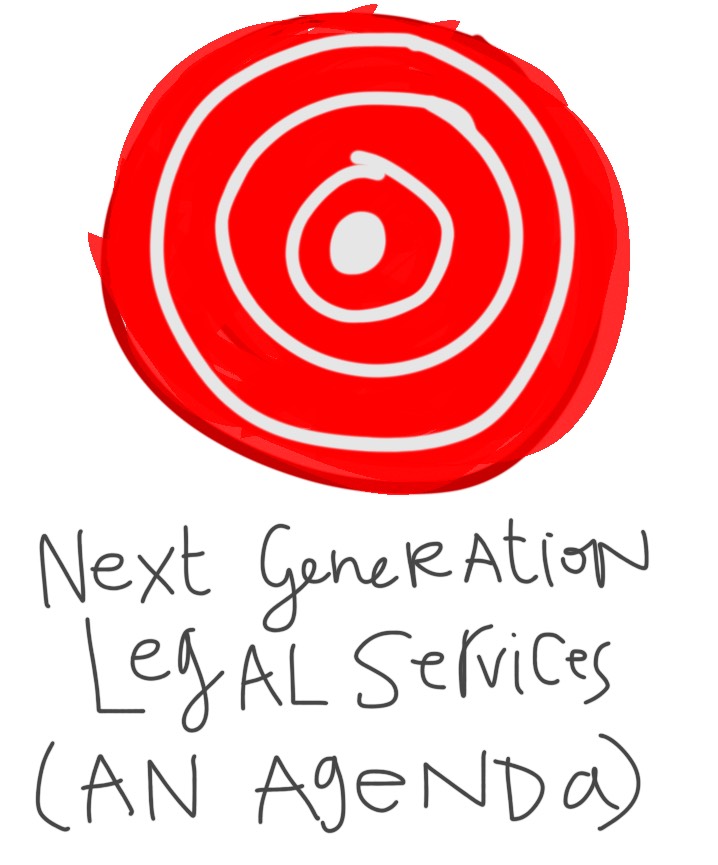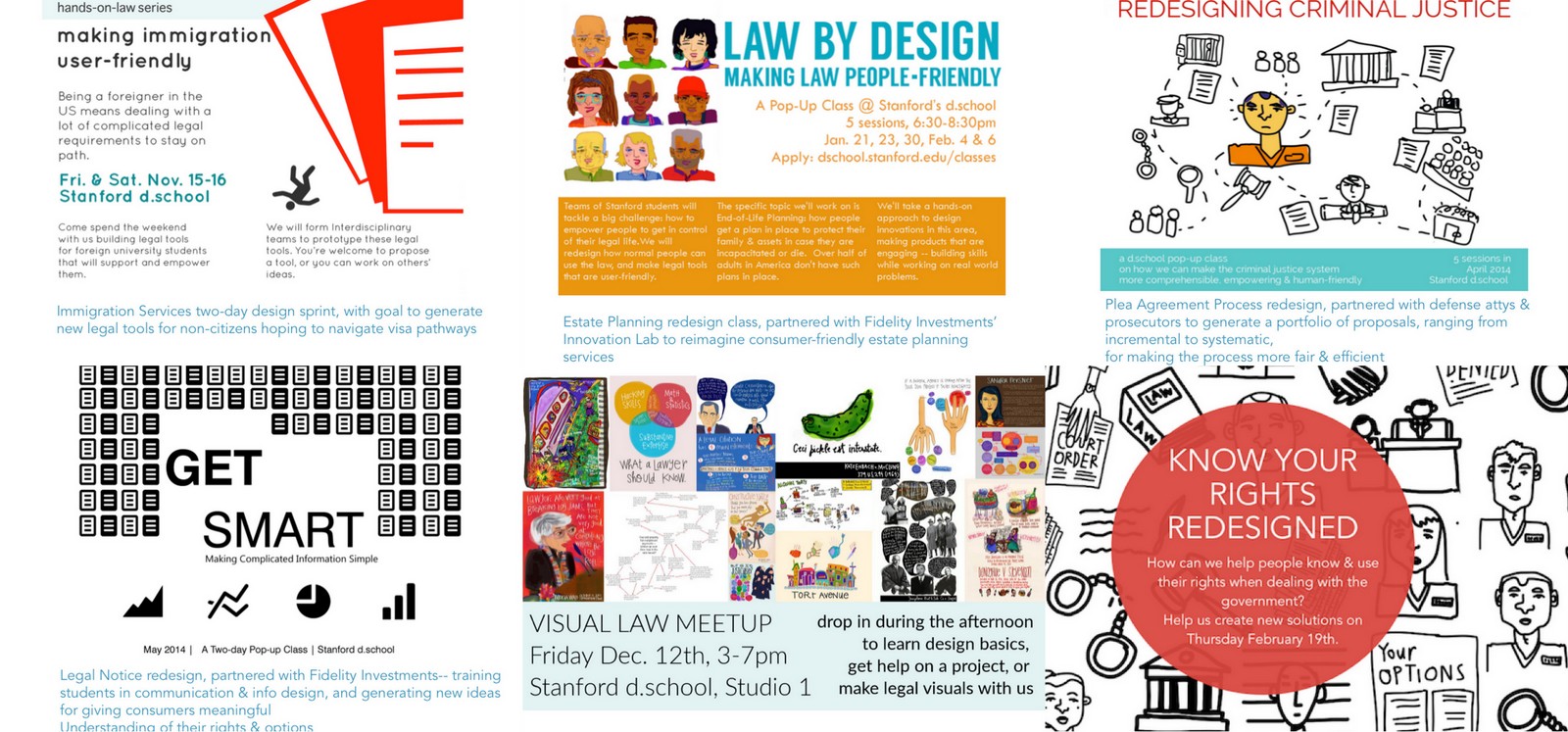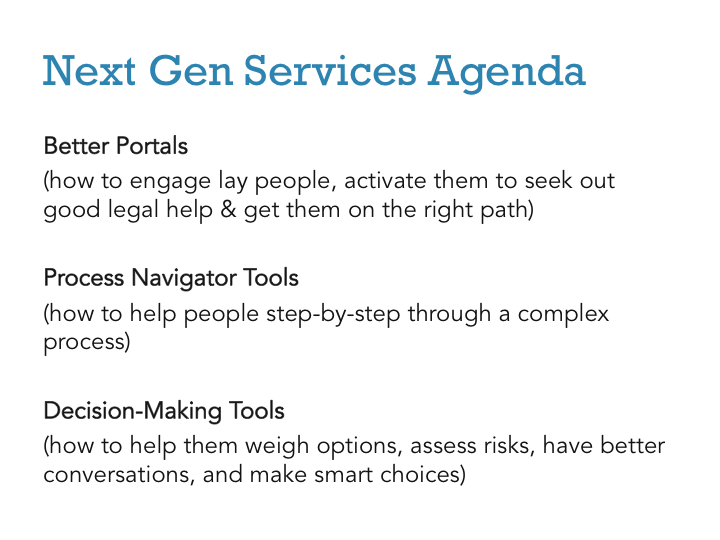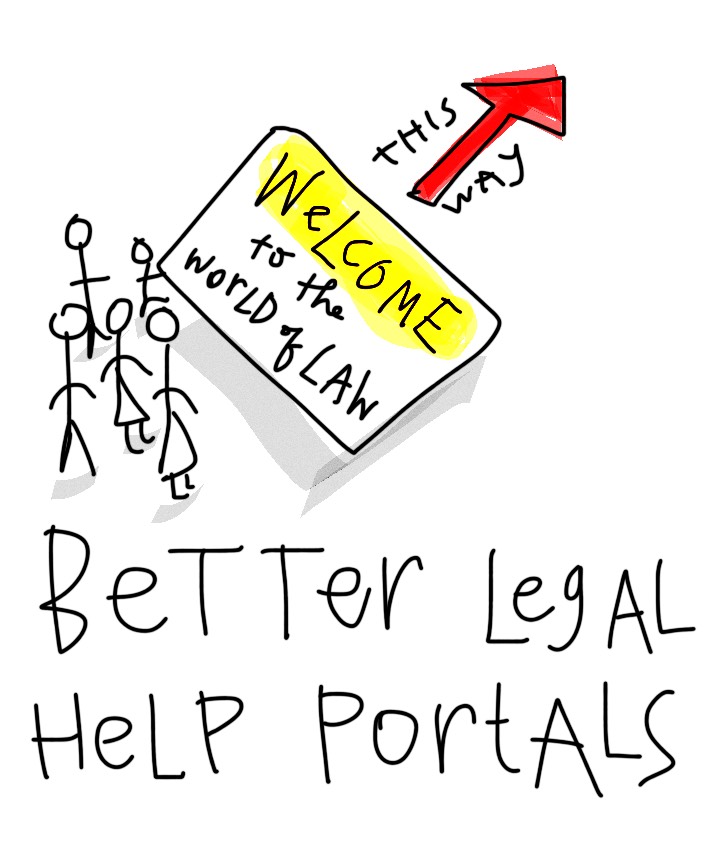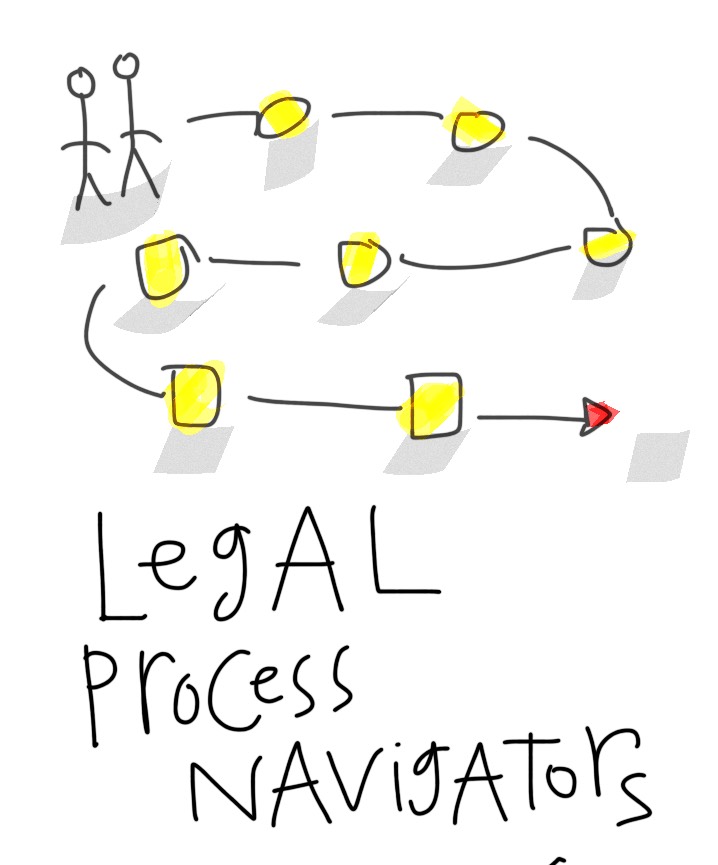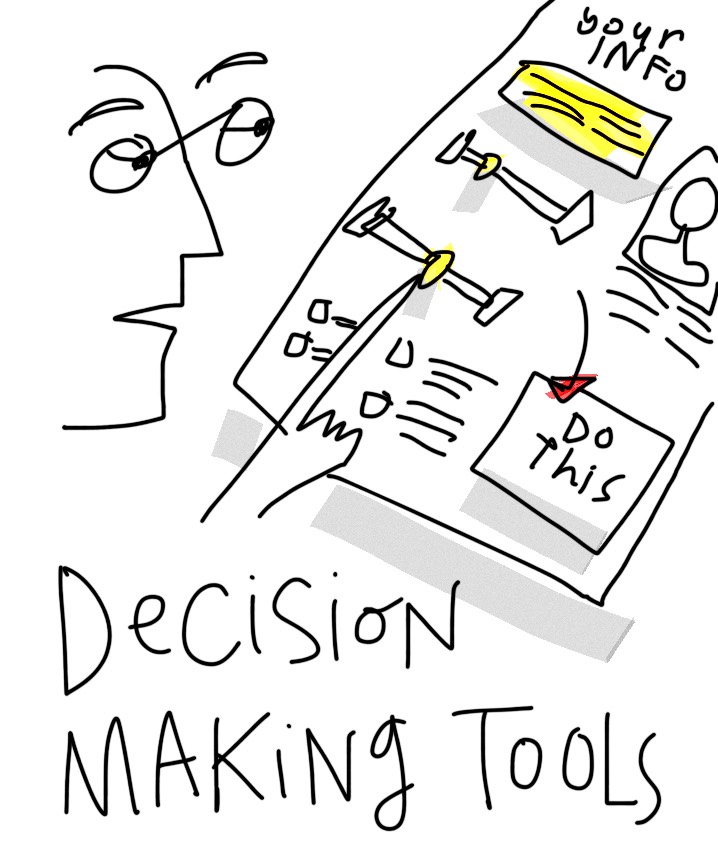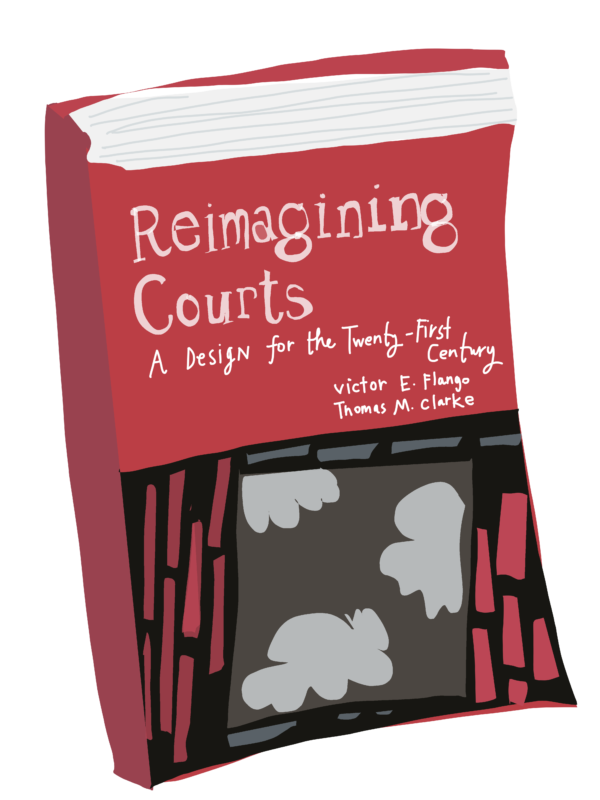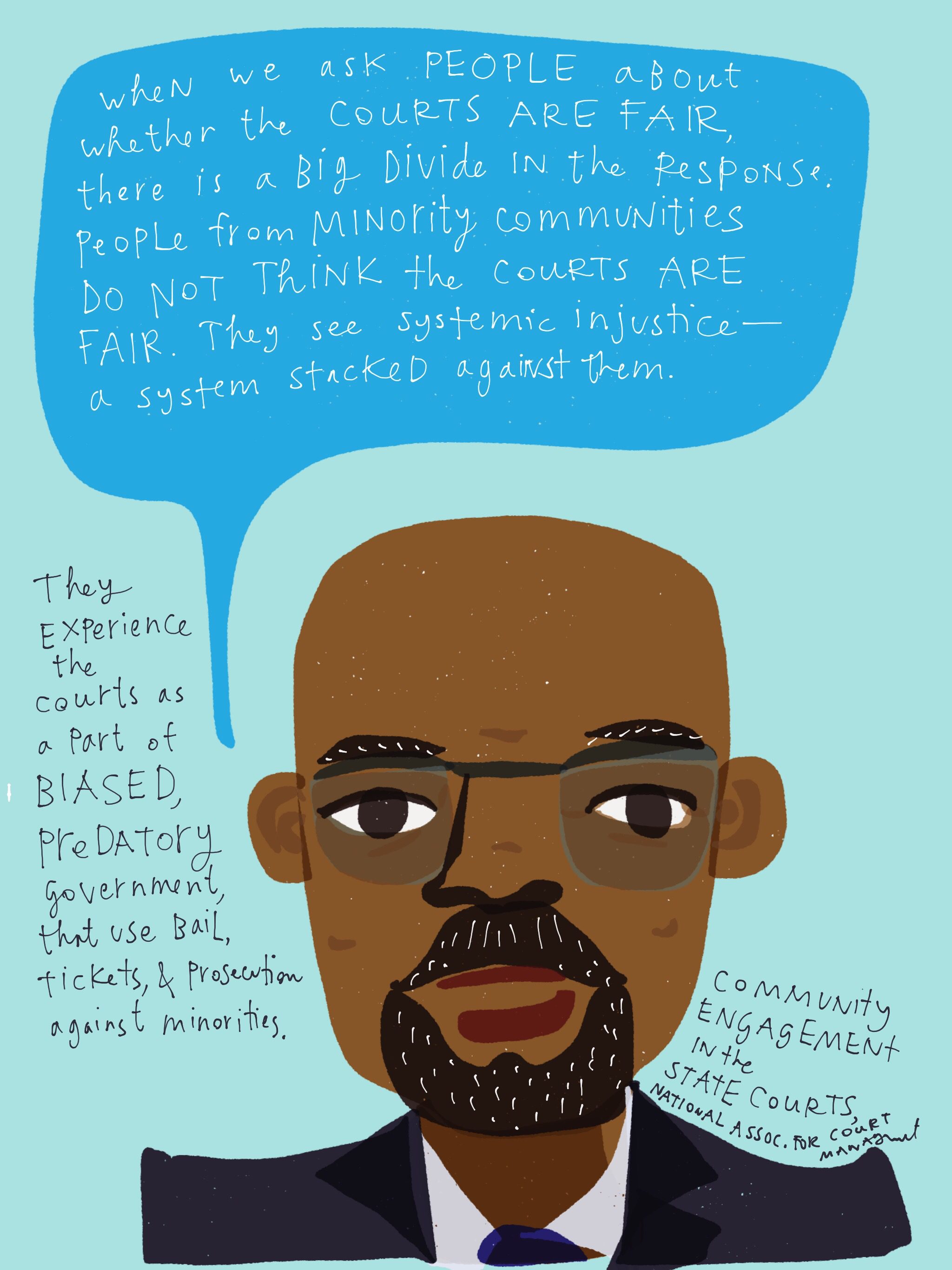In the world of access to justice, consumer law, and even big law services, we need to think more clearly about what kinds of new products and services we should be developing. Rather than being reactive or tech-driven, we should begin with what lay people want & need to do (these are the functions we should be providing them), and what preferences they have for learning information and taking action (these are the interfaces we should be delivering the functions through).
I’ve been running a host of workshops, design sprints, and hackathons to generate these new concepts and then to test them — which kind of legal products and services have enough promise to pursue?
From these exploratory events, and from user-testing for projects that I’ve been developing, I’ve seen patterns of what lay people want from legal services & what kind of interfaces they want to use.
There are three types of legal products/services that we (in the world of legal innovation) need to be focusing our development efforts:
- Better Portals for Legal Services
- Process Navigator Tools
- Decision-Making Tools
There are plenty of other categories of tools for development later — from quality checks, to intake of client data. Other categories have lots of work going into them right now — how to assemble documents together, how to match people with lawyers. But these three categories I’ve listed above — these are the families of products and services that users are showing high need for, and that we’re not currently working (enough) on.
Better Portals are online & offline entry points for legal help. This could be (one of my pet projects) a Google Search intervention, that catches legal-ish queries that a user enters into the search box, and then directs the user to good, quality, if not public & jurisdiction-specific legal resources. Or it could be real-world, situational entry-points — places in people’s everyday lives (in libraries, schools, hospitals, main streets) that allow them to get legal help in situations when they need it.
We as the legal community need to build a new set of on-ramps for people with problems to realize there can be legal relief for their ‘life problems’. And to be quality, engaging on-ramps, we need to find those touchpoints where people are open to seeking out legal help, and their preferred modes of doing so.
Process Navigator Tools are products or services that can guide a lay person (or even a novice lawyer) step-by-step through a legal matter. As the category title implies, it’s about taking a process-based view of how legal tasks can get done. We must break the procedures down into a concrete sequence of steps, and then for each step we give granular, plain English, visual guidance for how to get it done.
This kind of development work means exploding the usual ways we as lawyers convey legal guidance. No more static PDFs, no more hour long power point webinars, no more overly short & generic appetizer article about do’s & don’ts. Rather, we need a comprehensive & staged, thorough & interactive process navigator, that will lead a person through every nitty-gritty detail of getting a legal process done but do it in a responsive, smart, companion-like way.
It should be written in Plain language, it should allow a user to check tasks off, set reminders for others, save her progress, share her info & have it saved into the navigator, complete her forms and tasks on the platform, and generally be her all-in-one guide to getting this task done.
It should be like an expert paralegal, or court navigator, plus personal assistant to help a person complete all the steps of a legal procedure without missing paperwork, deadlines, or crucial small details. It should also help the person form an accurate timeline & workload expectation from the outset of a legal process, so she has a more transparent view of what’s coming & what she should be doing.
Decision Making Tools are interactive, customizable ways for a person to figure out how taking a certain action might play out. They allow a person to enter in her personal data (or an imagined version of it) and her preferences, and then it shows her potential outcomes that may result from different legal paths.
The value of these tools is in helping people to think through many scenarios, weigh their options, and see more long-term outcomes. One of the main barriers lay people express as they consider whether & how to engage legal help is ‘not knowing what I don’t know’ and ‘not being able to think through all the possible options’. People routinely express that they don’t want to pursue a legal course of action, because they’re not sure if it is comparatively the best fit for their situation & their goals.
Can we in the legal community build better tools, interventions, services that help people envision what consequences (short & long term, legal and otherwise) might result from different legal paths they take? Even if these envisionings aren’t perfectly accurate, if they help a person get a better overview of ‘what they don’t know they don’t know’ and start to play around with their preferences & resulting scenarios — they can go a long way in encouraging smarter decision-making.
These three camps of new products & services — better portals, process-based navigators, and decision-making tools — should be at the top of the agenda when we in the legal innovation community talk about providing better access to legal services. There is a need for each of these functions, if we are going to get people to realize that there are legal remedies for their life problems, and get them empowered to comprehend how they can get legal relief and how to choose the right path to pursue.
In later posts, I will show concept proposals, as well as examples and borrowed patterns, for each of these three product families. For now, the goal is merely to set these product families as an agenda for innovation. We need a more focused plan for how we are going to build better access to justice & legal user experience — these are three very needed & high-value targets for us to focus our innovative energy.

